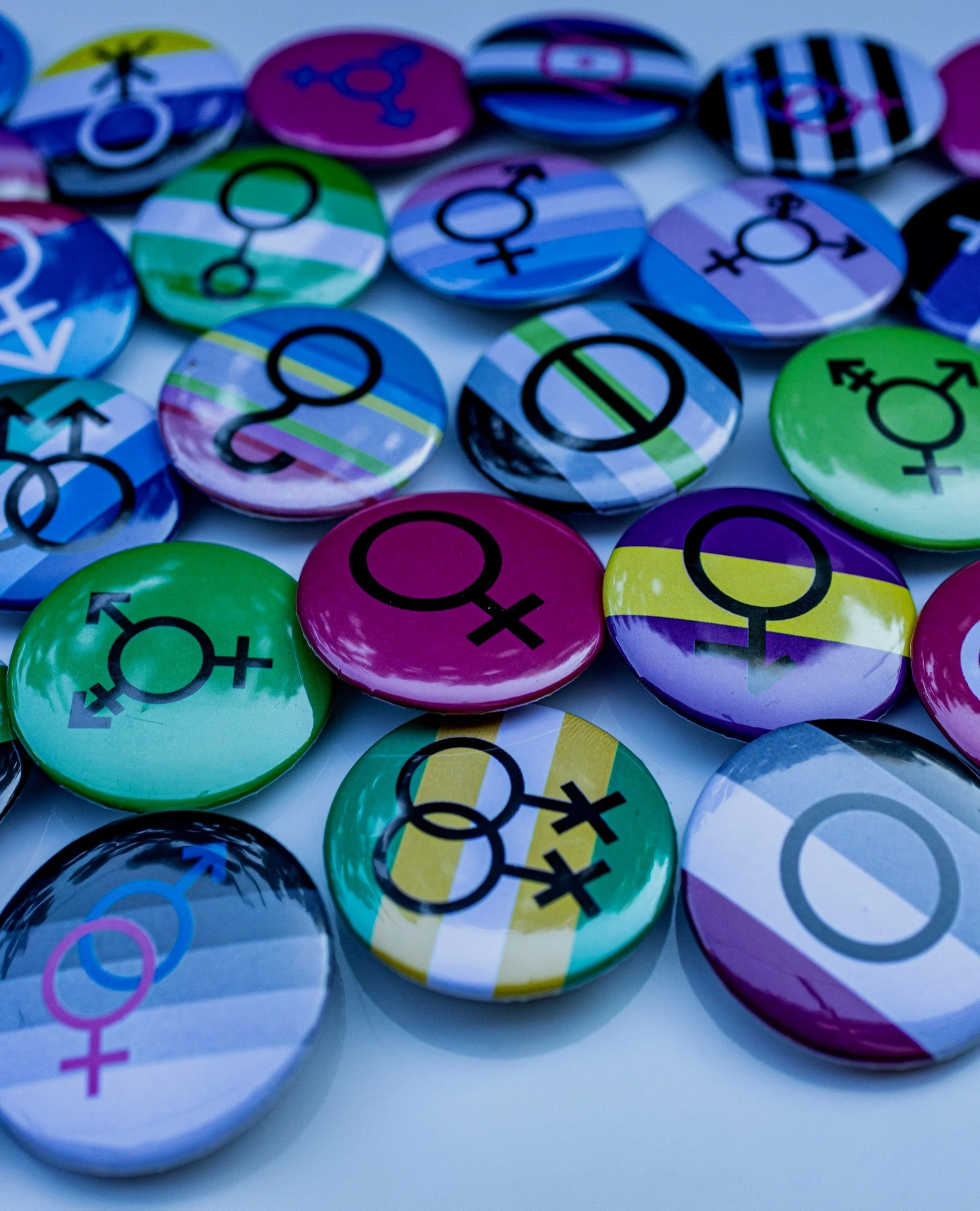gender dysphoria | a compassionate introduction
Gender dysphoria is a deeply personal experience that affects individuals in different ways. For some, it involves a strong sense of discomfort or distress because their gender identity doesn’t align with the sex they were assigned at birth. For others, the feelings may be more subtle but still profoundly felt.
In a world that’s becoming more aware of gender diversity, it’s important to approach this topic with openness, curiosity, and compassion. Whether you’re here to understand your own feelings, support someone you care about or simply learn more, this article offers a gentle introduction to what gender dysphoria is and how we can respond with kindness and understanding.
what is gender dysphoria?
Gender dysphoria refers to the psychological distress that can arise when a person’s gender identity doesn’t align with the sex they were assigned at birth. It is recognised by major health organisations such as the NHS and described in diagnostic manuals like the DSM-5 (Diagnostic and Statistical Manual of Mental Disorders).
It’s helpful to understand a few key terms:
gender identity | is a person’s internal sense of who they are - male, female, both, neither or somewhere along the gender spectrum
gender expression | is how someone presents their gender to the world - through clothing, voice, mannerisms and more
sex assigned at birth | refers to the classification made by medical professionals based on physical anatomy
Not everyone who is transgender or non-binary experiences gender dysphoria, but for those who do, it can bring significant emotional strain.
gender dysphoria and the lgbt+ community
Gender dysphoria is most commonly experienced by transgender individuals (whose gender identity differs from their assigned sex at birth) and non-binary individuals (whose gender identity doesn’t fit into traditional male/female categories). These identities are part of the broader LGBT+ community - a collective term for people with diverse sexual orientations and gender identities.
It’s important to distinguish between:
gender identity | who you are
sexual orientation | who you’re attracted to
what It might feel like
People experiencing gender dysphoria may feel:
discomfort with certain parts of their body, such as their voice, chest or facial hair
distress when referred to by the wrong pronouns or name
anxiety or depression related to being seen or treated as a gender they don’t identify with
a strong desire to live in a body or be seen in a way, that feels more aligned with their inner sense of self
These feelings can vary in intensity. Some people notice them more during specific life stages, such as puberty or social situations, while others may experience them more consistently.
For example, someone might be a transgender man who is attracted to men, making him gay. Another person might be non-binary and asexual. These are just two of many valid identity combinations.
Although gender dysphoria relates specifically to gender identity, people across the LGBT+ spectrum may face overlapping challenges such as stigma, isolation, or mental health struggles, especially in unsupportive environments. However, each individual’s experience is unique and should not be assumed based on a label or community alone.
Affirming care, inclusive spaces and clear, accessible information can make a meaningful difference for those navigating questions around gender, sexuality, or both.
causes and contributing factors
The exact causes of gender dysphoria aren’t fully understood. Research suggests it may stem from a combination of biological, psychological and social factors. What’s most important to understand is that gender dysphoria is not a mental illness. However, it can contribute to emotional distress if it’s met with misunderstanding, stigma or a lack of support.
Living in a society where gender expectations are rigid or where transgender identities are marginalised, can also heighten feelings of dysphoria.
support and coping
There is no single “right” way to manage gender dysphoria. Supportive approaches vary based on each individual’s needs and wishes. These might include:
social transition | such as using a different name or pronouns, changing clothing or hairstyle or adjusting how they speak or move
medical transition | which may involve hormone therapy or surgeries (though not everyone chooses or needs this)
therapy | offering a safe space to explore identity, process emotions and manage distress
peer support | where people with shared experiences offer understanding and encouragement
What matters most is that individuals feel respected and supported in whatever steps are right for them.
how to be supportive
If someone you care about is experiencing gender dysphoria, your support can make a powerful difference. Here are some meaningful ways to help:
listen without judgment | you don’t have to have all the answer - just being open and present is incredibly valuable
respect their pronouns and name | using the correct name and pronouns is a simple but vital way to affirm someone’s identity
educate yourself | learning about gender diversity helps reduce misunderstandings and shows your willingness to understand
be patient | exploring gender is often a journey. Give the person space and time to find what’s right for them
a personal story | from daughter to son
As a counsellor, I’ve supported many individuals through gender-related experiences, but I also come to this topic as a parent.
I’m the mother of a transgender son. I consider myself one of the lucky ones; I already had some understanding of gender dysphoria and what it might mean. But even with that knowledge, the experience was emotionally complex and at times, difficult.
When I first became a mum, I was thrilled to have my eldest son. I remember saying, half-jokingly, that if my second child wasn’t a daughter, I’d probably want more than two children. It became a bit of a family story.
Three years later, my daughter was born and she was everything I imagined. A girlie girl: bright, bubbly, full of life. I felt complete.
Fast forward to when she was around eleven. I started to notice small things, subtle signs that something wasn’t quite clicking. I wondered if she might tell me she was queer. So, one day, I sat down with her and said something simple: I knew I’d always made a big deal about having a daughter, but the truth was, it didn’t matter to me. What mattered was my relationship with my children - not whether I had a daughter or a son.
That gave her the space to say it: “I’m a him.”
And that was that.
I told him I’d be there. Every step of the way. I meant it. And I still do.
That said… yes, I grieved. Quietly. Gently. Not because I didn’t accept him, but because I had to let go of a version of life I once imagined. Parents go through a kind of transition, too. You might:
Slip up with pronouns
Worry about how others will react
Feel unsure about what to say or do
Sit with some discomfort or sadness, even while showing unconditional love
And that’s okay. Feelings can be messy. What matters most is showing up and continuing to love and support our children for who they are, not who we thought they’d be.
But I also know that not every parent starts from a place of understanding.
For some, it’s a shock. It might go against deeply held beliefs, hopes or expectations. It can feel confusing, frightening, or even alienating. If that’s you, if you’re struggling to make sense of it all - here’s what I gently offer:
be honest | with yourself
It’s okay to feel conflicted. You might feel sadness, guilt, anger, confusion or fear. These feelings aren’t wrong or shameful. They’re part of the process. Acknowledge them without judgment. You don’t have to pretend to be okay - but you do have to try to stay openget curious | not defensive
If you don’t understand what your child is going through, that’s a good reason to learn more, not to shut the door. Read. Listen. Ask questions (with sensitivity). There are books, podcasts, websites and support groups out there created by trans people, parents and professionals alike. Understanding often comes after listening, not before.talk to someone
You don’t have to carry your feelings alone. Talking to a counsellor, especially someone with experience in gender identity, can help you make sense of what’s happening without fear of saying the “wrong” thing. Parent support groups can also be a lifeline; hearing from others on similar journeys can be both reassuring and illuminating.separate your feelings | from your actions
Even if you’re not “there” yet emotionally, your child still needs your love, respect and safety. Using their chosen name and pronouns, showing interest in their experiences and advocating for their wellbeing - all of that matters deeply. Affirmation isn’t just about belief; it’s about behaviour. You can support your child even while your heart is still catching up.remember | your child is still your child
They haven’t become someone else. They’ve just found the courage to show you who they really are. At the core, that same vibrant, loving, funny, complicated person you’ve always known is still there, just finally being honest about how they see themselves. Your love, your presence, your willingness to walk beside them. These are the things they’ll remember most.
you don’t have to be perfect
you just have to keep showing up
seeking help
If you’re experiencing gender dysphoria, or if you’re supporting someone who is, please know you are not alone. Talking to a trained therapist can provide a safe and affirming space to explore your feelings, navigate uncertainty and move forward with confidence and clarity.
I offer a confidential, inclusive environment where all aspects of identity are welcomed and respected. Whether you're just beginning to explore your gender or are further along your journey, I'm here to support you.
Gender dysphoria is a real and often misunderstood experience. But with compassion, education, and the right support, it’s possible to ease distress and move toward a more authentic, fulfilling life.
everyone deserves to feel at home in themselves
If you're exploring your gender identity, supporting a loved one, or simply feeling overwhelmed by the emotional weight of these experiences, counselling can be a valuable source of support. I offer a warm, inclusive, and non-judgmental space where you can talk freely, gain clarity, and feel truly heard. My practice is based in Farnham, offering both in-person and online sessions to suit your needs ~ wherever you are on your journey.
Counselling in Farnham | You’re Welcome Here
these organisations can offer additional help and support
mermaids ~ www.mermaidsuk.org.uk
supports transgender, non-binary, and gender-diverse children, young people and their families. Offers helplines, parent resources, and youth forumsgendered intelligence ~ www.genderedintelligence.co.uk
provides education, youth groups and training to improve understanding of gender diversitystonewall ~ www.stonewall.org.uk
a leading LGBTQ+ rights charity offering educational resources, guidance on coming out, workplace inclusion and legal advicemind ~ www.mind.org.uk
offers mental health support tailored to the LGBTQ+ community, including advice on gender dysphoria, identity and coming outFFLAG (Families and Friends of Lesbians and Gays) ~ www.fflag.org.uk
supports parents and families of LGBTQ+ individuals, offering guidance and peer-led supportthe proud trust ~ www.theproudtrust.org
offers youth work, education resources and LGBTQ+ support groups across the UK







